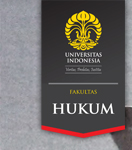Abstract
This work attempts to analyze the implementation of the GI law and regulations in the traditional handicraft industry in Indonesia. We particularly focus on the natural and human factors that are assessed when stakeholders apply for GI registration for their traditional handicraft products. This work also analyzes the books of requirements of five handicrafts with registered GIs in Indonesia. Indonesia’s GI regulations and policies, especially with regard to handicrafts, are compared with those of India and Thailand. The article comprises four chapters. Chapter 1 introduces the topic of this work. Chapter 2 explores the protection of traditional handicrafts through GI systems. Chapter 3 details the GI law and regulations in Indonesia and the traditional handicrafts protected by GI. Chapter 4 analyzes the issue of GI registration for traditional handicrafts in Indonesia, especially the issue of the assessment of natural and human factors. The chapter also covers the comparative analysis of the GI systems implemented in Indonesia, India, and Thailand to protect traditional handicrafts. Chapter 5 summarizes our conclusions and recommendations.
Bahasa Abstract
Peraturan Menteri 12/2019 tidak mencantumkan ketentuan-ketentuan atau indikator-indikator untuk memeriksa Indikasi Geografis (IG) dari kerajinan tangan. Untuk mendapatkan informasi secara lebih lengkap mengenai isu ini, maka melalui tulisan ini kami hendak mengelaborasikan berbagai macam peraturan perundang-undangan tentang Indikasi Geografis di India dan Thailand. Negara-negara tersebut dipilih dalam studi perbandingan ini dikarenakan keduanya telah lebih banyak melakukan pendaftaran atas Indikasi Geografis dari kerajinan tangan jika dibandingkan dengan Indonesia. Fokus kajian kami dalam tulisan ini adalah faktor-faktor alam dan manusia yang akan dinilai pada saat seseorang hendak mendaftarkan Indikasi Geografis dari kerajinan tangannya. Tulisan ini juga akan menganalisis buku-buku yang memuat persyaratanpersyaratan pendaftaran Indikasi Geografis dari lima jenis kerajinan tangan di Indonesia.
References
Bibliography
Books & Publications
Ayu, Miranda Risang. Memperbincangkan Hak Kekayaan Intelektual, Indikasi Geografis. (Discussing Intellectual Property Rights, Geographical Indications). (Bandung:P.T. Alumni, 2006).
Carlos M. Correa. Trade Related Aspects of Intellectual Property Rights: A Commentary on the TRIPS Agreement (New York: Oxford University Press, 2007)
Christopher Heath and Anselm Kamperman (ed.) IIC Studies in Intellectual Property and Copyright Law, Volume 25: New Frontiers of Intellectual Property Law: IP and Cultural Heritage, Geographical Indications, Enforcement and Over Protection, (Oregon: Hart Publishing, 2005).
Christopher Heath, “Geographical Indications: International, Bilateral, and Regional Agreement”, IIC Studies in Intellectual Property and Copyright Law, Volume 25: New Frontiers of Intellectual Property Law: IP and Cultural Heritage, Geographical Indications, Enforcement and Over Protection, (Oregon:hart Publishing, 2005).
Cita Tenun Indonesia. Tenun:Handwoven Textiles of Indonesia.(Jakarta: Cita Tenun Indonesia,
Dev Gangjee. Relocating the Law of Geographical Indications. (Cambridge: Cambridge University Press, 2012).
Dev Gangjee.. Research Handbook on Intellectual Property and Geographical Indications. (Massachussets: Edward Elgar Publishing, 2016).
Hector Mac Queen, Waelde, Lairie, and Brown. Contemporary Intellectual Property: Law and Policy (New York: Oxford University Press, 2011).
Kathy Bowrey, Michael Handler and Dianne Nicol, ed. Emerging Challenge in Intellectual Property (Victoria:Oxford University Press, 2011).
Lionel Bently and Sherman. Intellectual Property Law, 3rd edition. (New York: Oxford University Press, 2009).
Sanders, Anselm Kamperman, “Future Solutions for Protecting Geographical Indications Worldwide”, IIC Studies in Intellectual Property and Copyright Law, Volume 25: New Frontiers of Intellectual Property Law: IP and Cultural Heritage, Geographical Indications, Enforcement and Over Protection, (Oregon: Hart Publishing, 2005).
Teshager W. Dagne.” The Identity of Geographical Indications and Their Relation to Traditional
Knowledge in Intellectual Property Law. WIPO Journal Vol 5 Issue 2, 2014
WIPO Publication No. 5-2016.Intellectual Property and Traditional Handicraft
Chuthaporn Ngokkuen and Ulrike Grote. “Challenge and Opportunity for Protecting
Geographical Indication in Thailand”. Asia-Pacific Development Journal Vol. 19, No. 2, December 2012.
Directorate General of Intellectual Property (DGIP) of Indonesia. Jepara Wood Carving
Furniture Books of Requirement.
Directorate General of Intellectual Property (DGIP) of Indonesia. Tunun Gringsing Bali Books of
Requirement.
Directorate General of Intellectual Property (DGIP) of Indonesia. Tenun Ikat Sikka Books of
Requirement.
Directorate General of Intellectual Property (DGIP) of Indonesia. Tenun Ikat Tanimbar Books
of Requirement.
Directorate General of Intellectual Property (DGIP) of Indonesia. Tenun Sutra Mandar Books of
Requirement.
Laws and Regulations
Indonesia. Undang-undang Republik Indonesia Nomor 20 Tahun 2016 tentang Merek dan Indikasi Geografis, Lembaran Negara Tahun 2016 Nomor 252, Tambahan Lembaran Negara Nomor 5953.
Indonesia. Undang-Undang Republik Indonesia Nomor 15 Tahun 2001 Tentang Merek. [Law of
the Republic of Indonesia Number 15 Year 2001 Concerning Trademark]. State Gazette Year 2011. Supplement to State Gazette Number 4131.
Indonesia Peraturan Pemerintah Republik Indonesia Nomor 51 Tahun 2007 Tentang Indikasi-Geografis. [Government Regulation of the Republic of Inodnesia Number 51 Year 2007 Concerning Geographical Indication]. State Gazette Year 2007 Number 115. Supplement to State Gazette Number 4763.
Indonesia. Law of the Republic of Indonesia Number 7 Year 1994 concerning the Ratificating of
the Agreement Establishing The World Trade Organization (Persetujuan Pembentukan Organisasi Perdagangan Dunia), State Gazette Year 1994 Number 57, Supplement to State Gazette Number 3564.
India. The Geographical Indications of Goods (Registration and Protection) Act, 1999. WIPO
Lex. http://www.wipo.int/wipolex/en/text.jsp?file_id=128106.
India. The Geographical Indications of Goods (Registration and Protection) Rules, 2002.WIPO
Lex. http://www.wipo.int/wipolex/en/text.jsp?file_id=128113.
Thailand. Act on Protection of Geographical Indication B.E.2546(2003). WIPO Lex.
http://www.wipo.int/wipolex/en/text.jsp?file_id=185549.
Electronic Articles & Websites:
Handmade in India: Traditional Craft Skills in a Changing World By: Maureen Liebl and Tirthankar Roy.http://www.aiacaonline.org/sites/default/files/handmade-in-india.article
Thailand Geographical Indications – Where Do We Stand Today? By Mrs. Pajchima Tanasanti Director General Department of Intellectual Property http://www.wipo.int/edocs/mdocs/geoind/en/wipo_geo_bkk_13/wipo_geo_bkk_13_5.article
List of Thai and Foreign registered geographical indications in Thailand (August!2013).http://www.ananda-ip.com/files/List_Thai_Foreign_Registered_GIS_Thailand.article
Industri Mebel dan Kerajinan Menjadi Dukungan Ekonomi Indonesia https://coisasevontades.wordpress.com/2017/10/17/industri-mebel-dan-kerajinan-menjadi-dukungan-ekonomi-indonesia/
Produk Kerajinan Indonesia di Mancanegara. http://asephi.com/en/produk-kerajinan-indonesia-di-mancanegara/
Industri Mebel dan Kerajinan Menjadi Dukungan Ekonomi Indonesia https://coisasevontades.wordpress.com/2017/10/17/industri-mebel-dan-kerajinan-menjadi-dukungan-ekonomi-indonesia/
Ekspor Kerajinan Indonesia 2016 Tembus Rp8,19 Triliun. https://economy.okezone.com/read/2017/02/11/320/1615812/ekspor-kerajinan-indonesia-2016-tembus-rp8-19-triliun
Menperin Dorong Industri Kecil Menengah Kain dan Tenun Berkembang". http://setkab.go.id/nilai-ekspor-industri-tenun-dan-batik-lampaui-151-juta-dollar/
State Wise Registration Details of G.I. Applications Till 13-06-2016 http://www.ttg-sric.iitkgp.ac.in/GIDrive/images/gi/registered_GI_13June2016.article
Recommended Citation
Sugiri, Ranggalawe Suryasaladin
(2020)
"Utilization of Geographical Indication Protection System for Traditional Handicrafts in Indonesia,"
Indonesia Law Review: Vol. 10:
No.
3, Article 1.
DOI: 10.15742/ilrev.v10n2.653
Available at:
https://scholarhub.ui.ac.id/ilrev/vol10/iss3/1

